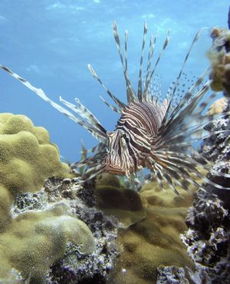Content:
Fishing in a black pit, also known as a private fishing lake or pond, can be an incredibly rewarding experience. However, it requires a certain level of skill and knowledge, especially when it comes to switching bait effectively. This article will delve into the intricacies of black pit fishing and provide you with expert tips on how to master the art of bait switching to improve your fishing success.
Understanding Black Pit Fishing
Before we dive into the specifics of bait switching, it's important to understand the unique environment of a black pit. These waters are often stocked with a variety of fish species, including bass, catfish, and panfish. The key to success lies in understanding the behavior and preferences of these fish, as well as the conditions of the water.
Choosing the Right Bait
The first step in mastering black pit fishing is selecting the right bait. Different fish species have varying preferences, so it's crucial to know what type of bait to use for each. Here are some common types of bait and their ideal applications:

Live Bait: Live bait, such as worms, minnows, and crayfish, can be highly effective for attracting fish. Live bait is especially useful in areas where fish are feeding actively or in deeper waters.
Artificial Lures: Artificial lures, like spinners, jigs, and crankbaits, can mimic the movement of natural prey and are suitable for a wide range of fish species. They are a great choice for beginners and experienced anglers alike.
Soft Plastics: Soft plastics, such as worms, grubs, and creature baits, are versatile and can be used in various fishing techniques. They are ideal for attracting bass, panfish, and even catfish.
Scented Baits: Scented baits, which include both live and artificial baits, can enhance the attractiveness of your offerings. Scents like garlic, anise, and corn can be particularly effective in certain conditions.
The Art of Bait Switching
Now that you have a basic understanding of the types of bait available, let's discuss the art of bait switching. Bait switching involves changing your bait based on the fishing conditions, fish behavior, and your personal experience. Here are some tips to help you master this technique:
Observe the Water: Pay close attention to the water conditions, such as visibility, temperature, and oxygen levels. Fish may behave differently under various conditions, so adjusting your bait accordingly can increase your chances of success.
Monitor the Fish: Watch the fish as they feed. If you notice them targeting a particular type of bait, switch to that bait immediately. Similarly, if the fish are not responding to a certain type of bait, try something new.
Experiment with Colors: Different colors can attract different fish. Experiment with various colors of lures and baits to see which ones work best in your particular situation.
Adjust Your Technique: Sometimes, simply changing your retrieve or casting technique can make a significant difference. Try varying your speed, depth, and angle of presentation to see if it affects the fish's response.
Keep a Log: Keep a log of your fishing experiences, including the bait you used, the time of day, and the weather conditions. This will help you identify patterns and refine your bait switching strategy over time.
Advanced Bait Switching Techniques
For those looking to take their black pit fishing to the next level, here are some advanced bait switching techniques:
Using Multiple Baits: Keep a variety of baits on hand and switch between them to see which one works best. This can be particularly effective in situations where fish are unpredictable.
Layering Baits: For certain species, like catfish, layering baits can be effective. For example, you might use a piece of cut bait on the bottom with a live worm or minnow on the hook.
Timing Your Switches: Pay attention to the time of day and how it affects fish activity. For instance, some fish may be more active during dawn and dusk, while others may feed throughout the day.
Using Scent Triggers: In addition to the bait itself, consider using scent triggers to attract fish. These can be in the form of scented baits, attractants, or even homemade concoctions.
In conclusion, mastering the art of bait switching in black pit fishing is a skill that requires practice, observation, and adaptability. By understanding the behavior of the fish, the conditions of the water, and the various types of bait available, you can increase your chances of success. Remember to experiment, keep a log of your experiences, and always be ready to switch bait based on the situation at hand. Happy fishing!












